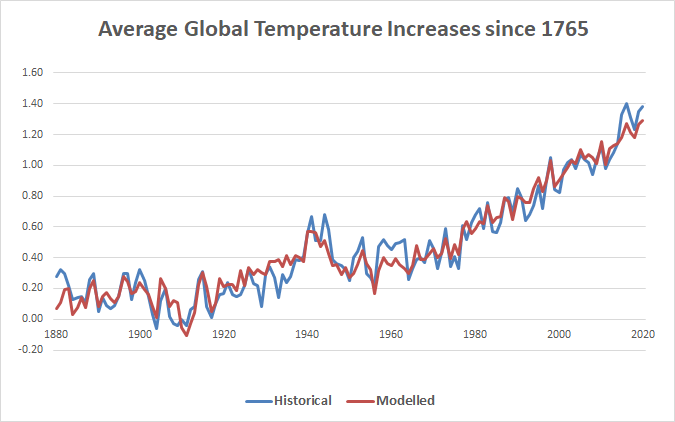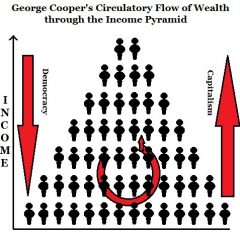CO2 equivalent (CO2e) attempts to provide a unified measure of Greenhouse Gas emissions (GHGs). Yet it is neither robust nor truthful, primarily because it fails to take into account the 9.5 years half-life of methane.
Calculating CO2e
To convert methane emissions to CO2e emissions, the estimated methane emissions are multiplied by 25.
Since a half-life for methane of 9.5 years converts to an average life of 13.5 years, it would be more robust if CO2e calculations compared the target year’s methane emissions with those 14 years early and then only the difference between those two years was multiplied by 25.
Modelling Global Warming
When attempting to model the impact of the atmospheric levels of greenhouse gas it is actually much better to use the actual levels of each greenhouse gas to calculate the forcing of each of these gases. These individual numbers can then be combined to arrive at a total forcing level.
Another advantage of this method is that it is based on actual observations, rather than estimated levels of emissions, and uses the published levels of forcings for each gas, most of which have been known since 1990 and earlier, modified slightly in 1996. These figures have not been challenged in the scientific literature since then, as far as I can determine.
Here is the results of this kind of modelling. It clearly supports the scientific argument that GHGs have caused the temperature to rise.

Problems arising from using CO2e
Since methane is the second most important GHG, it is essential that its impact is fully understood, even by the ordinary public, but especially by journalists and opinion leaders.
If the method of calculating CO2e had real merit for policy-makers, we should be able to use this method in calculating likely atmospheric methane levels. Following this approach, if we add the methane emissions from 1951 to 2020 to the atmospheric methane in 1950, we should get a result close to the actual atmospheric methane in 2020, namely 1870 ppb. Instead we get 24600 ppb, which just demonstrates the logical problem with CO2e. When we see IPCC graphs of CO2e, stretching out to 2100, we don’t have to take these numbers seriously – they are just “indicative,” but of what is not clear.
The frequently raised issue of the projected levels of meat consumption and its climate consequences is a symptom of the unscientific use of CO2e in climate change advocacy and the simple failure to understand or explain the underlying science to journalists and by journalists to the public.
A proper evaluation of the impact of methane on global warming would not see red meat as the first line of attack; instead, the matter that was first addressed would be fugitive emissions from coal and gas extraction, transport and use. Due to human errors and technical problems, these can easily and unexpectedly give rise to higher methane levels. These will take years to work through the system, whereas additional meat consumption will not lead to significant increases in global average temperatures. Cuts in red meat consumption will be difficult to implement and have a minor impact, in comparison with issues like fugitive emissions.
Conclusion
Unless scientists can find a better way to express CO2e, it would be better if journalists and advocates restrained themselves and only referred to CO2, N2O and the F-gases, each of which has its own story. Methane needs a more nuanced analysis than it currently receives.
